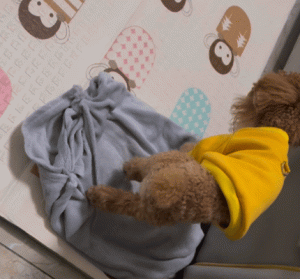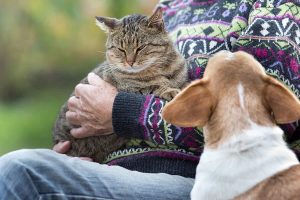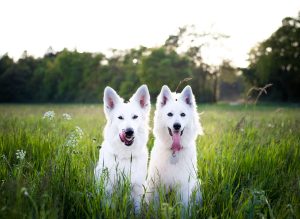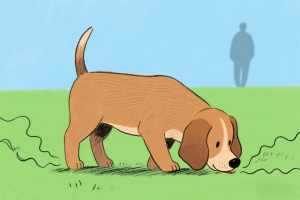-
Trying to Use Human Furniture and Objects
Your dog may insist on sitting in a chair or on the couch like a person—not just curling up, but sitting upright with its bottom on the cushion and its back against the backrest, sometimes even resting a paw on the armrest.When it sleeps, it might lay its head on a pillow or wriggle under a blanket as if imitating a human bedtime routine.Some pups even attempt to “operate” toys or gadgets, such as pressing a remote control, or show unusual fascination with human items like toothbrushes and combs, trying to mimic how people use them.
-
Demanding an Equal Dining Experience
Instead of eating quietly from its food bowl, the dog may insist on sitting at the dining table, paws on the edge, staring longingly at your plate as if to say, “Why can you eat that and I can’t?”
It might refuse kibble in a floor-level bowl, yet happily devour food served on a plate or in a bowl handed directly to it.Many become picky eaters—showing huge interest in human food while turning their nose up at regular dog food—clearly seeking “equal treatment” at mealtime. -
Imitating Human Poses and Gestures
Your pup may sprawl out like a person, belly up with all four legs in the air, or lounge sideways watching TV.It might do a full-on “lazy slump” on the sofa, looking either blissfully relaxed or dramatically bored.When it wants something, it may tap you lightly with a paw or point toward the desired item instead of barking, almost like giving hand signals.Even facial expressions can seem human: eye rolls, a look of exasperation, or a smug grin that feels strikingly person-like despite canine anatomy.
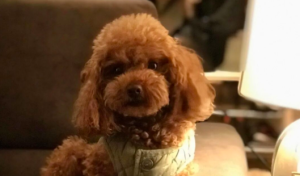
-
Wanting to Join Human Social Activities
Some dogs become little “chatterboxes,” whining or making varied sounds to join a conversation when you’re talking or on the phone.They love introductions: when guests visit, they push to the front as if expecting you to formally present them and give them equal attention.During family discussions, they insist on sitting in the center circle, acting like an important participant in the gathering.
-
Showing Human-Like Emotions and Needs
Jealousy is common: if you focus on another pet, scroll your phone, or hold a baby, the dog might wedge itself between you, block your view, or make grumbling sounds to demand exclusive attention.They also “comfort” their humans—snuggling, licking, or resting their head on you when you’re sad, crying, or unwell, displaying empathy far beyond basic animal instinct.When caught misbehaving, some pups exhibit signs of “embarrassment” or “shame”: lowering their head, drooping ears, avoiding eye contact, or even hiding—remarkably similar to human reactions.
-
Losing Interest in Fellow Dogs
Instead of playing with other dogs, these pups often prefer human company, seeming aloof or socially awkward around canine friends.To them, people are the real companions—their chosen pack.


